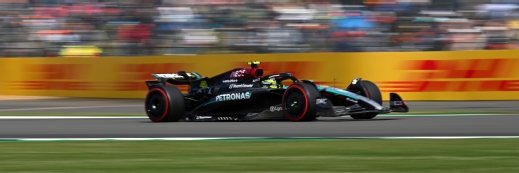
Daimler AG
Formula 1: Mercedes team turns to big data in quest for victory in Grand Prix
Data analytics could help Mercedes-AMG Petronas Motorsport team gain an edge on rival Ferrari during the 2017 and 2018 Grand Prix season. Its head of IT, Matt Harris, reveals the team’s plans
In Formula 1 (F1) racing, a thousandth of a second can make the difference between qualifying or failing to qualify.
That can amount to just a six centimetre gap between one car and another over the course of a circuit.
With such small margins at stake, racing teams need to wring every ounce of performance from the car – and that means harvesting and analysing as much data as possible from each race.
The Mercedes-AMG Petronas Motorsport team is doing just that, with a project that promises to turn data into wins.
The team – with its drivers, Lewis Hamilton and Valtteri Bottas – have high standards to live up to as holders of the 2016 FIA Formula 1 World Championship.
They are already proving their mettel in the 2017 Grand Prix season. Lewis Hamilton stormed to victory in the Italian Grand Prix in Monza on 3 September, beating Ferrari’s Sebastian Vettel by 36 seconds and putting Hamilton in the lead position for the Drivers’ Championship.
Hamilton’s teammate Valtteri Bottas came in 2nd place, claiming his 9th podium win to date.
Faster than the speed of data
The Mercedes-AMG Petronas Motorsport team owes its success to its advanced technology just as much to the skills of its drivers.
Now the team is developing advanced analytics technology to fine-tune the performance of its latest F1 W08 EQ Power+ cars, as it seeks to keep its edge on the track.
Built from lightweight carbon fibre composite, the latest Silver Arrows car is reputedly the most powerful car in the history of Formula 1. It is designed to take advantage of the latest rule changes in F1, which promise faster cars, more G-force and more exciting races.
Each car features 200 sensors which generate millions of data points per race weekend – the equivalent of 300GB of data. Add in data from the rest of the business and the total reaches 45TB of data a week.
Analysing this volume of data stretches the motor team’s resources, says Matt Harris, head of IT for Mercedes-AMG Petronas Motorsport, in an interview with Computer Weekly.
The racing team employs 800 people at its headquarters in Brackley, Northamptonshire, just a short distance from Silverstone, the home of British Grand Prix.
Another 700 people work at Brixworth, the home of Mercedes AMG High Performance Powertrains, which designs and builds hybrid power units for Mercedes-AMG Petronas Motorsport, and other partner F1 teams, including Williams, Lotus and Sahara Force India.
The Mercedes team signed a partnership deal with the data analytics and integration specialist Tibco Software, based in Palo Alto, in April. The deal will add a “virtual team” of data analysts to the motor team’s workforce.
Tibco is the latest in a list of official sponsors, which include the Malaysian oil and gas company Petroliam Nasional Berhad (Petronas), the telecommunications company Qualcomm, and specialist flash-memory data storage provider Pure Storage. Tibco’s logo now features on Hamilton’s and Bottas’s helmets.
“We don’t have a huge workforce, and the workers all have particular jobs,” says Harris. “So if we can start to partner with [companies] like Tibco, it means they can become virtual parts of the team.”
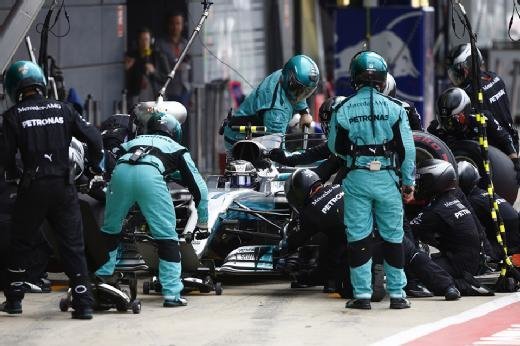
The Mercedes team has given Tibco’s data analysts free reign to go through its data to identify patterns and opportunities that Mercedes in-house engineers might have missed.
The organisations plan to pool their resources to analyse data from the race track over time. By doing so, they can identify the exceptions that could alert the racing team to a problem, or help them fine-tune a car’s performance – separating the data that really matters from the background noise.
In the future, when a car crosses the finish line a fraction of a second behind a rival, Harris is confident that the Mercedes team engineers will know precisely where to look to make sure it doesn’t happen again.
There are many variables – such as the time the cars started the laps, tyre pressure, the weight of the car, or the line the driver took on the track – that could be relevant.
“All that information is available for us to look at and to digest, but which data do you look at and which do you ignore because it’s the norm?” says Harris.
Catching data on the move
The Mercedes team began working with the telecommunications company Qualcomm in 2015 to develop technology to automatically download data collected by arrays of sensors built-in to its Formula 1 cars.
Until that point, Mercedes-AMG Petronas Motorsport had to wait until the cars were in the garage to plug in connectors to download the data.
Mercedes worked with Qualcomm to develop and test technology to download data automatically while the car was still in motion. This gives engineers more time to spend optimising the performance of the car.
The latest iteration offloads data in two stages. As soon as the car enters the pit lane, it begins transmitting data using a protocol known as high speed gigabit Wi-Fi, before switching to 60-GHz transmission four metres from the garage. The transmission continues while the car is stationary.
Those extra few seconds of data gleaned while the car is travelling along the pit lane are critical. It means engineers have more time to analyse the car’s performance – and may make the difference between a car qualifying or failing to qualify, and their qualifying speed.
The Mercedes team uses a network developed by Tata Communications to send data from the track side at race sites worldwide – from Azerbaijan, Monaco, China, Russia, and other iconic racing tracks – to a team of engineers at its factory in Brackley.
In Brackley, between 30 and 50 engineers are on hand to analyse the data and to fine-tune the configuration of the car on Saturdays and Sundays. On Fridays, the numbers can be substantially greater.
In the next phase of the plan, Mercedes-AMG Petronas Motorsport plans to use Tibco’s Streambase technology to analyse more data while it is being transmitted on the move.
The aim of the project is to allow engineers to work more effectively during the gap between the practice and qualifying rounds, which can last up to 90 minutes.
Harris is confident he can give Mercedes’ mechanics up to an extra 20 minutes to work on the car by reducing the time taken to download and identify the important data to analyse.
“The mechanics are under pressure for 70 minutes – if you can give them another 20, they are less likely to have issues because they are not rushing,” says Harris.
The starting line
Two of the company’s engineers came up with the idea of using Tibco’s technology around a year ago, while developing ways to improve the motor racing team’s gearbox control systems.
At the same time, Mercedes’ power train division at Brixworth in Northamptonshire was evaluating the same technology as a route to improving engine performance.
It took around a year to create a plan, which identified how the racing team could best use the technology, where to use it and what the best use cases were, says Harris.
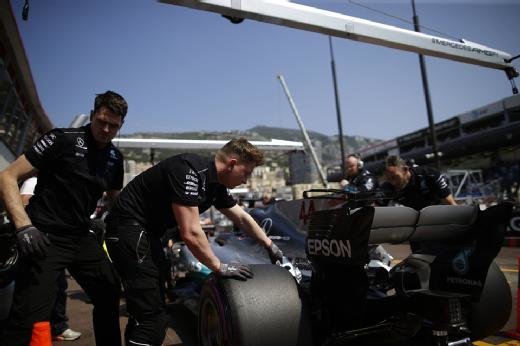
Around half a dozen people in IT and other areas of the team are now experimenting with the Tibco analytics technology, but the number is likely to increase over time.
“We could have just jumped straight in and delivered the system – the problem is we then get 100 engineers who jump in and get a bit excited. So we are trying to be very specific with the first use cases,” says Harris.
The team is close to going live with data analytics to improve regression testing for software updates. Over the coming months, Harris is optimistic that the team can begin to use data to track the performance of the gearbox.
Monte Carlo simulations
The analytics technology will eventually allow Mercedes-AMG Petronas Motorsport to compare pre-race simulations – which use a mathematical technique known as Monte Carlo analysis to create race predictions – with the team’s performance during the race.
It will be able to consider, for example, how the car’s tyres are performing, how other drivers’ tyres are likely to be, and when the optimum time is for a driver to make a pit stop.
Harris also has plans to use analytics technology to provide round-the-clock access to car data after the race.
He has a small IT team of around 30 people responsible for everything from databases to business applications, including SAP and product lifecycle management (PLM).
Two IT staff are dedicated to setting up IT systems on the track around 20 or 21 times a year depending on the racing calendar.
The equipment has to be robust to withstand the dry, dusty environments such as Bahrain, and the high humidity of Singapore. Sand from the surrounding area and carbon fibres from the cars can also cause problems.
The team has 36 hours to set up equipment for the garage, including the IT systems, in what Harris describes as a “very challenging few days” before a typical race meeting. But taking it apart is even tighter – just 6 hours.
“We have to make sure that it is absolutely pristine. The following week, we have 36 hours to put it together again, and it has to be perfect,” he says.
Disappearing data
One drawback is that once the kit is packed into boxes the data it contains is accessible to the team until the next race. That could be anything from a few days to a full week.
At each race meeting the engineers try to keep the IT equipment out until the last possible minute, while the rest of the garage is being packed up, to maximise their time to analyse the numbers.
“From an IT perspective and from an infrastructure point of view, that is a nightmare,” says Harris. “I have all that data I could be looking at if we have issues, but it’s in a plane somewhere.”
The team copies the data onto a hard drive and flies it back to the UK. It can take 36 hours to get the data back to the Brackley factory. “Brazil is probably the worst one,” adds Harris. During some parts of season, race data may be inaccessible for six or seven days.
The IT team is looking at ways to send the racing data to a secure cloud, have it available in the next race venue, and migrate it onto the track equipment when its back online. By 2019, it could be possible for engineers to continue working on the data once the IT equipment has been packed away.
“We can’t do it at the moment, but there are tool sets that are coming out, so we are hopeful,” says Harris
Fixing problems before they happen
Like every team, Mercedes receives data on race timings, GPS and the weather from the Federation Internationale de l’Automobile (FIA), the governing body for motorsport. This allows the team to make predictions on tyre degradation, for example.
Better analytics will give the team more accurate predictions of how quickly components are wearing, and whether a pit stop is due. Although Mercedes does have analytic capabilities already, it is “fairly rudimentary”, relying on Microsoft Excel and scatter plots, says Harris.
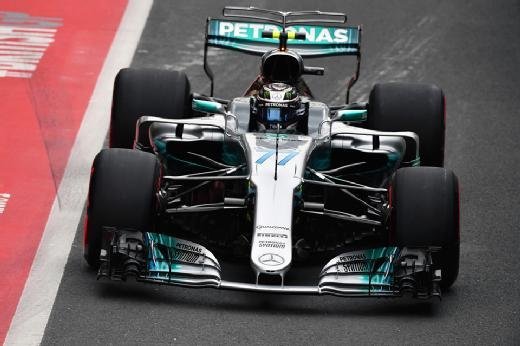
In the Monaco Grand Prix, for example, Hamilton and Bottas typically make 100 gear changes per lap, generating thousands of data points which show how components are wearing.
By comparing the data with data from past races, engineers can work out the impact that hitting a bump during a gear change might have on the life of the gear box. This predictive information will allow the racing team to know with greater certainty, whether a car will be able to finish the race.
Filter lanes
The team plans to use the Tibco technology to separate the important data that engineers need to look at from less important data.
“Our plan is about filtering out the norm. You don’t need to look at the data if it’s the same as every other lap – ignore that and focus on where the differences are,” says Harris.
Engineers will be able to correlate the changes they made to the car with its performance, allowing them to make decisions based on a wider range of relevant data, rather than on hunches.
“The whole point is hopefully to make it so the human can analyse the exceptions, not analyse the whole of the data. Using brain power for the exception, rather than the mundane and the repetitive,” says Harris.
Testing times
The next stage of the plan is to use analytics technology to improve software regression testing when code is updated.
The process is highly manual and relies on people to go through data to spot errors. Harris plans to use the analytics program to identify the anomalies in the code.
The IT team, and other parts of the business, can roll out several iterations of software each day on a race weekend. That means coordinating software updates and having a range of key software tools, including the simulation engine, the data analytics and the processing engine.
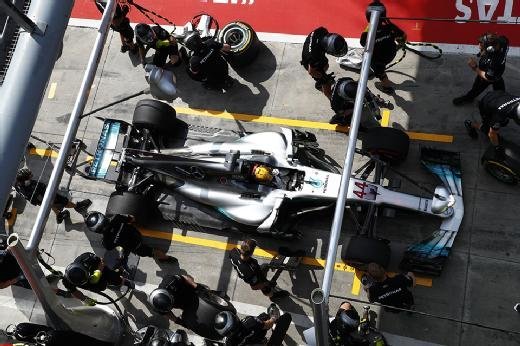
“Basically, any wrong move in any of those tool changes could mean you don’t correlate the tool data,” says Harris.
That includes data from the engine dynos, which test engine performance, wind tunnel simulators and the trackside.
“We have to make sure the data sources all marry up and give us the same information,” adds Harris.
Talking in numbers
After 20 years analysing data on the trackside, Mercedes-AMG Petronas Motorsport has spotted opportunities to use data more effectively throughout the organisation.
“Everybody is beginning to understand that having a printed-out piece of paper means it is out of date as soon as you have [printed] it,” says Harris.
If engineers and managers carry a tablet with them, they can make decisions based off real-time data, rather than from data that is already 24 hours out of date, says Harris.
The Tibco software is also likely to find applications in analysing the log data in the racing team’s computer network.
With only a small IT team, Harris does not have the resources to go through what amounts to millions of lines of log data to monitor what is going on in the network.
“One of the jobs I will be looking at is to take that log data and aggregate it to give us a visual idea of what exceptions we should be looking at,” says Harris.
However, he is wary of trying to do too much at once. “We don’t want to spread ourselves too thinly and not get the true benefit in the right areas first,” adds Harris.
Cooling fans
Over time, the Mercedes team plans to work with Tibco to find ways to analyse data at rest, as well as live data and streaming data, and bring them into a single software tool set.
Harris plans to look at other tool sets that will add automation and machine learning to the team’s data analytics, along with better ways to visualise data.
Another priority for the Mercedes team is to use social media to allow the team to share information and to interact with motor racing fans.
Following Liberty Media’s take over of Formula 1 in January 2017, getting closer to the fans has become a big priority for the sport.
The Mercedes team has 11 million online fans, but its Facebook algorithms decide who gets to see each post, which means some fans miss out. The same is true of Twitter and Instragram, says Harris.
The Mercedes team has solved this problem by publishing a mobile app that will give fans access to motor racing pictures, articles and videos, when they want it.
“The idea with our fan app is that we will be able to do more engaged content, more related to individuals. Fans will be able to pick what their favourite information is,” says Harris. “I am sure there will be some interactions with Tibco analysing those interactions.”
Rule changes
This season’s Formula 1 sees the introduction of new rules that will mean faster cars, more G-force for the drivers, and promises more spectacular races.
The latest regime is widely seen as a move to that will make Formula 1 more challenging for Mercedes-AMG Petronas Motorsport, and perhaps give opponents such as Ferrari’s Sebastian Vettel more of an edge.
It is still uncertain what the ultimate effect of the rule changes will be, and whether more powerful cars will come at the expense of motor vehicles being able to overtake each other as easily as before.
Read more on Business applications
-
![]()
Mercedes-AMG Petronas F1 revs up testing with augmented reality
-
![]()
Mercedes-AMG Petronas F1 team chooses SAP Cloud ERP to gain edge
-
![]()
Interview: Steve Riley, head of IT operations and service management, Mercedes-AMG Petronas F1
-
![]()
How the Mercedes F1 IT team helped Lewis Hamilton win the British Grand Prix









